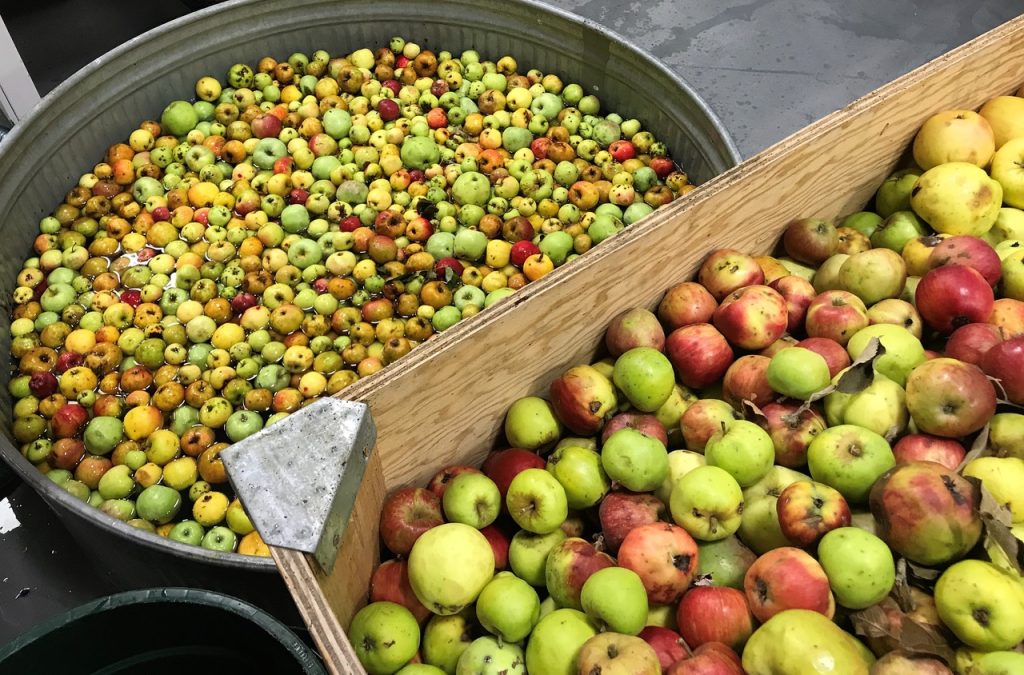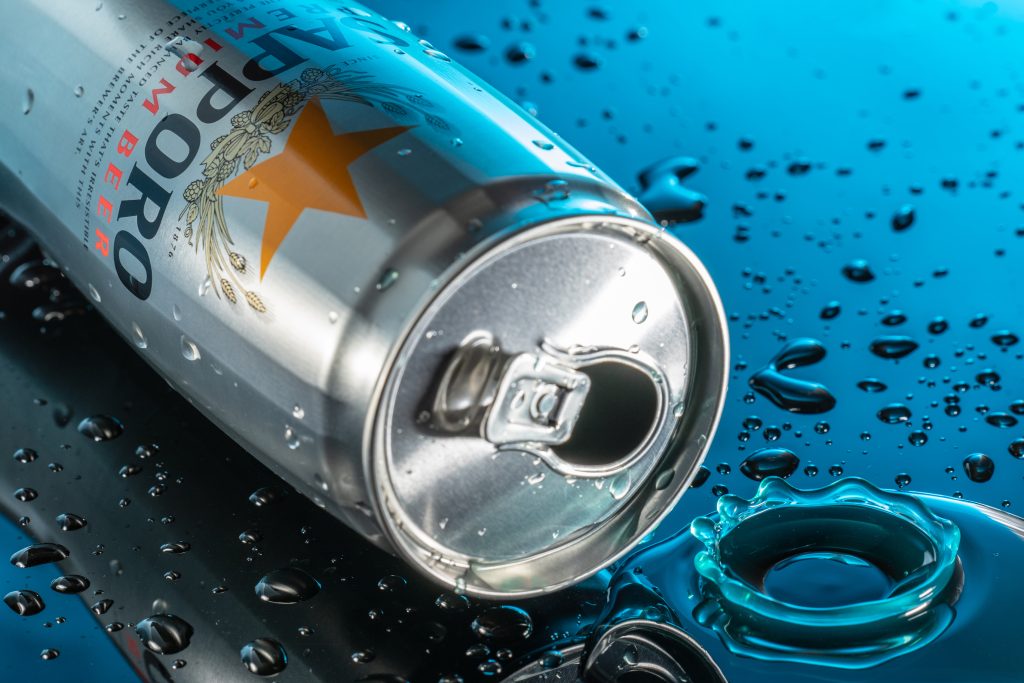
By: Gerald Dlubala
Located in the arts district of Los Angeles, the Greenbar Distillery operates in a historic brick building built in 1905 and positioned in the same diverse neighborhood that houses iconic residents like Warner Brothers Music, Soho House and Hyperloop. Intermingled with high-end coffee shops, trendy barbershops and homeless tents, husband-and-wife team Melkon Khosrovian and Litty Matthews transformed an old strip club into the Greenbar Distillery in 2011.
“Our space is colorful, modern, vibrant and warm,” said Khosrovian. “It is multicultural and optimistic, invoking the classic positive vibe of LA, where people come to fulfill their dreams, whatever they may be. There are giant windows overlooking our production floor, so customers can see and understand what we’re all about. We were the first distillery in Los Angeles since at least the Prohibition Era. For the true cocktail lover, Greenbar Distillery was the only exposure to the industry for at least a decade, so we wanted to make sure that if cocktail lovers found us, we did the best possible job to make their cocktail experience positive and up to all of their expectations, while showing them what goes into running a distillery.”
Khosrovian tells Beverage Master Magazine that the distillery came about out of necessity to keep up with the demand for their homemade spirits beginning in 2004. Neither Khosrovian nor Matthews had any actual distilling or spirits experience. They met in graduate school, and their experience with spirits was only from the consumer side of the bar. But within two years, their home distilling hobby blossomed and became more work than a hobby.
“We were engaged and doing the normal family circuit, meeting each other’s families, relatives and friends,” said Khosrovian. “For us and our heritage, that meant hosting big gatherings with big meals and frequent toasts featuring our homemade, fruit-based, high-proof alcohol. Litty is a trained chef and foodie with an educated palette, and she considered our homemade alcohol to be slightly medicinal and, frankly, not very good. She would politely pick up her glass for the toast but set it down again without drinking. That was awkward for me, so I set out to make something she would enjoy by incorporating the same culinary skills and techniques she used to produce her amazing food. Additionally, we took trips to the farmers’ markets to find ingredients to add in different ways and improve our alcohol’s flavor and aroma. We had some success, which we quickly bottled for future family gatherings using homemade printed labels. The ultimate feeling of success was when family and friends asked for more, and then friends of friends started requesting bottles of our product.”
Khosrovian said that interest in their homemade spirits sparked a serious conversation about which direction to take their success. Luckily for all of us, they chose to start distilling on a larger scale. The first step was renting a small space in a nearby town that allowed a slightly larger scale of production to satisfy the demand from friends and relatives but also allowed them to be able to connect with and supply some of the local bars, hotels and restaurants that had an interest in using their products.
“This was pre-pandemic when 80 percent of our business was related to being used as a bartender brand in restaurants, bars and hotels,” said Khosrovian. “We had tried to gain the home drinker’s interest by putting recipes on our labels, setting up stands at stores with recipes that they could make at home and hosting classes and tastings to try and see where we could improve our marketing and increase bottle sales, but nothing seemed to work. Actually, the reverse happened, even though our drinks received rave reviews. We were totally baffled but finally realized the only way to pursue our dream of showing customers how to drink better and more interesting things using our products was to make it easier for the consumer and provide ready-to-drink (RTD) cocktails.”
So, Greenbar started offering three spritz cocktails in cans, and as Khosrovian would later admit, that timing was crucial because shortly after, the pandemic closed the bars, hotels and restaurants, literally all of their income sources.

Pandemic Problems Lead to Successful Solutions
“The pandemic took away our revenue stream, and since we already found that consumers were unwilling to put in the work to make our cocktails at home, our only choice at this point was to can our cocktails and provide them as additional RTD options,” said Khosrovian. “Initially, we made everything in-house, including vodka, but now our base alcohol is made to our standards off-site. We use the base alcohols to ferment things like rum and whiskey on site and then redistill things like gin, liqueurs and amaro using our unique flavorings. We initially made and carbonated our RTDs in-house and used mobile canners for packaging, but it became very costly and difficult to get on their schedule and adhere to their specified run sizes. Forecasting our needs that far in advance was also a challenge, so about two and a half years ago, we invested in a medium-speed canning line that allows us to do 100 cans per minute in-house, on-site. With a two-million-dollar investment in additional accessories, we can do everything in-house, from creating the spirits to creating carbonated beverages to packaging.”
“Today, the RTD market remains about 75 percent of our business, and surprisingly, most of it is in the NA (no alcohol) market,” said Khosrovian. “That fact initially humbled us, but as we began to work with markets, who were quite literally our lifeline to the public, we saw that they were getting a lot of questions about NA or LA (low alcohol) options. Those markets were rapidly growing, but consumers wanted something different than only the juice additives or normally available seltzers.”
Khosrovian said they dove into the NA topic to see if it was a legitimate option because the idea of cocktails without alcohol was unfamiliar to him.
“We needed to know what the consumers were really after in these types of drinks,” said Khosrovian. “So, we talked to consumers who either drank alcohol minimally or not at all and found the qualities consumers were after in these types of cocktails were related more to the experience of drinking the cocktail than the actual effects of the alcohol.”
• They wanted something that changed their mood. With proper flavoring and layering, consumers will respond to NA cocktails in the same ways they do to complex, layered, alcohol-based cocktails.
• Consumers wanted something that reengineered their brains and jolted them out of work mode and into a more social mode, similar to the vibe that alcohol-based counterparts do.
• They wanted something they could drink comfortably and slowly, changing the tempo and brain function to initiate a slower pace to their mental state and social interactions.
“We began to ask ourselves if we could provide these things with NA cocktails and have them function and deliver the overall experience similar to their alcohol-based counterparts. The answer was obviously yes, because consumers are looking for more of these types of options. As a result, NA cocktails can be enjoyed more often and in more situations without the limitations or consequences of alcohol consumption.
Organics, Sustainability and One-Bottle-One-Tree
Khosrovian tells Beverage Master Magazine that sustainability wasn’t a primary goal of Greenbar Distillery but rather an accidental, fortunate outcome of their business philosophy. In California, where the growing season is year-round, Khosrovian always requests the best aromatic and flavorful produce from partnering farmers. When he inadvertently received a harvest from a certified organic orchard without his knowledge, a batch of chocolate orange vodka was noticeably different. It was better, as in more aromatic and more flavorful, but different. That experience from a grower growing organic to make sure his farm would be a lasting legacy for future generations made such an impression because of the increased flavor and aroma that Khosrovian and Matthews immediately decided to use only organic ingredients from that day forward. But they also researched and learned more about implementing organic and sustainable practices in other production areas.
“We applied this same way of thinking to our packaging, including bottles, printing, labeling, capsules and so on,” said Khosrovian. “We traditionally used heavyweight bottles with laminated labels on virgin paper that would last 100 years. But who would actually want to keep these things that long? We continually asked ourselves what else we could do to help. Both of our heritages have a tradition of planting a tree for every baby born in the family, and in a way, these bottles are our kids. So, we started a program to plant a tree for every bottle we sold, and the Greenbar name was born. It just felt right to give back for our success. We communicated this to all of our customers, and it sounded noble, but no one knew what it actually meant. We needed verifiable results, so after the first year, we hired agencies to determine what effect this action of planting high-canopy trees in return for bottle sales really had on our carbon footprint. In consumer terms, the results showed that if the average American drinks one and a half ounces of our spirits in a day, they are carbon negative for that day. It’s a little thing, but eventually, it adds up and makes a difference. Since 2008, we’ve planted over a million trees, equating to 10 to 12 million carbon-neutral people daily.”
“So, now we ask, what has your drink done for you?” said Khosrovian. “We’re not revolutionizing or stopping climate change, but it’s something for the consumer to consider. We still have to deliver on our promise of drinking better and more interesting things with great taste, but if the consumer has a choice between products that give them the same or better experience, then maybe they can look towards products that go beyond the spirit and help out in other ways.”
Staying Within Yourself
“I would tell anyone starting in this business first to get to know yourself and be true to your feelings because, in the end, that’s what you’ll end up doing,” said Khosrovian. “Don’t shortchange yourself or your possibilities because you don’t have to follow anyone’s footsteps in distilling. Grab your chance to be creative, and whatever you do will work and be satisfying. Some will like it, some won’t and that’s okay, but fakes usually don’t last. We’ve evolved over 18 years from helping restaurant, bar and hotel industries serve those who prefer to drink better outside of the home to helping customers drink better wherever they want to consume our products. We’ve learned things the hard way, but frankly, we got lucky on many business fronts as well. We are very good at manipulating and layering flavors to make our products delicious, flavorful and interesting to the consumer. In return, they appreciated and wanted more. Our love and passion come through in our products, so much so that as a loving gesture to my wife, Litty, there is a heart on nearly every one of our products, signifying how we got all of this started.”
Khosrovian and Matthews also look for that same creativity, passion and willingness to play and learn in their employees. The freedom to express oneself and occasionally screw up is part of being a Greenbar Distillery employee. Khosrovian says mistakes happen and are okay because that learning experience will lead to improvements and ultimately result in happy customers.
Consumers Drive Future Goals
“We will be going more towards the whole cocktail as our product versus only ingredients,” said Khosrovian. “This includes looking at RTDs in every format available, versus only base spirits. Our experience has opened our eyes to how much the customer is willing to embrace cocktails outside of the bar atmosphere, provided we can give them a similar experience and level of comfort. As happy as we are that the restaurant and bar world has returned, regularly going out to a bar can be inconvenient and expensive. We provide the best of the bar experience for consumers in every format possible, wherever they choose to drink better and more interestingly to enjoy our products”.
Greenbar Distillery now makes the most extensive portfolio of organic spirits globally. Joining their TRU Vodkas are CRUSOE Rums, IXA Tequilas, SLOW HAND Whiskeys, FRUITLAB Liqueurs, CITY Gins, GRAND POPPY and GRAND HOPS Amari and BAR KEEP Bitters.
“As a craft distiller, we always strive to meet the consumers where they are to ensure their craft cocktail experience is better, easier and more interesting.”
For more product information, or to learn more about Greenbar Distillery, visit or call: Greenbar Distillery, 2459 E 8th Street, Los Angeles, CA 90021, (213) 375-3668, www.greenbardistillery.com








